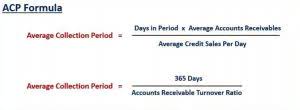
This figure is important because it translates a company’s overall performance into per-share metrics, making an analysis much easier regarding a stock’s market price at a given time. If there are 100 shares outstanding and you buy one, you own 1% of the company’s equity. For blue chip stocks, multiple stock splits over decades contribute to market capitalization growth and investor portfolio expansion.
Outstanding vs. issued vs. float

For example, the difference between the number of shares currently outstanding and the number of shares fully diluted is comparatively likely to be significant for fast-growing technology companies. For instance, a 2-for-1 how to calculate number of shares outstanding stock split reduces the price of the stock by 50%, but also increases the number of shares outstanding by 2x. When a company issues shares, it is basically selling parts of ownership to the public in exchange for money.
Motley Fool Returns
Note that the latest information on the number of shares outstanding is nearly 2 months after the balance sheet date. It also offered 3,000 shares to each of the two managing directors and has 5,600 treasury shares. Floating shares serve as a good representation of the company’s active shares or share turnover among various investors in the market, excluding parties holding substantial portions of equity.
- Weighted average shares outstanding refers to the number of shares of a company calculated after adjusting for changes in the share capital over a reporting period.
- You’ll also see the various other stock categories, so don’t let that confuse you.
- When evaluating a stock for investment, it’s essential to look beyond just the stock price.
- Floating shares serve as a good representation of the company’s active shares or share turnover among various investors in the market, excluding parties holding substantial portions of equity.
- Stock splits are generally undertaken to make the share price of the firm fall within the range of what retail investors are willing to pay.
Accounting Crash Courses
This metric provides insight into the company’s net worth based on its assets and liabilities. Shares outstanding are useful for calculating many widely used measures of a company, like its market capitalization and earnings per share (EPS). Investors may find it useful to compare a company’s floating stock to its outstanding shares when they’re making investment decisions. All companies must report their common stock outstanding on their balance sheet.
- The seven billion floating shares are the shares considered for the free float, market capitalization index weightings.
- Investors use this information to gauge the company’s financial health and potential for growth.
- A widely held opinion is that when these companies are repurchasing shares, they tend to do it when they have a lot of cash.
- And when shares are bought back, investors end up owning more of the company.
Create a free account to unlock this Template
Although this decreases liquidity due to fewer shares, it can deter short sellers by making it harder to borrow shares for short selling. But the concept of outstanding shares is a bit more complicated than it seems. The number of shares outstanding changes over time, sometimes dramatically, which can impact the calculation for a reporting period. At any given point, instruments like warrants and stock options must be accounted for as well. It’s worth noting that a company’s basic number of shares outstanding can differ from its fully diluted number of shares.

How Often Should Outstanding Shares be Calculated?

The float is the portion of outstanding shares that’s most relevant for smaller investors. The company can increase or decrease the number of shares outstanding by issuing new https://www.bookstime.com/blog/oil-and-gas-accounting shares or via share repurchases (buybacks). In the US, public companies are obligated to report their number of shares outstanding as part of the SEC’s filing requirements.
- It’s always a smaller figure because it only counts the number of shares available for investment and trading on financial exchanges.
- Essentially, treasury shares are the portion of the shares that a firm keeps in its treasury.
- Most of the time, corporations will tell investors how many shares of stock they’ve issued, but sometimes, it’s helpful to be able to calculate those numbers on your own.
- Companies may do this to increase their share price, such as if they need to satisfy exchange listing requirements or want to deter short sellers.
- A company’s outstanding shares decrease when there is a reverse stock split.
Outstanding shares play a pivotal role in determining a company’s market capitalization, earnings per share (EPS), and shareholder influence. Investors use this information to gauge the company’s financial health and potential for growth. Those instruments can be “in the money” if the exercise price — the price designated for the stock by the option or warrant — is below the stock’s trading price.
- Using the SUMPRODUCT function, we’ll calculate the weighted average shares outstanding over fiscal year 2021, which comes out to 448,265.
- Like a company’s outstanding shares, a company’s float also changes on a consistent basis.
- By considering factors such as EPS, investors can make informed decisions about where to allocate their capital.
- Volatility profiles based on trailing-three-year calculations of the standard deviation of service investment returns.

